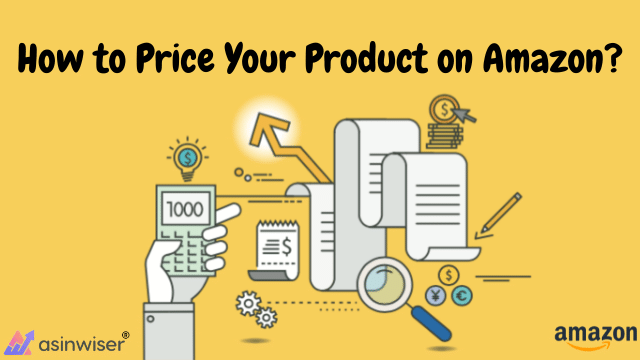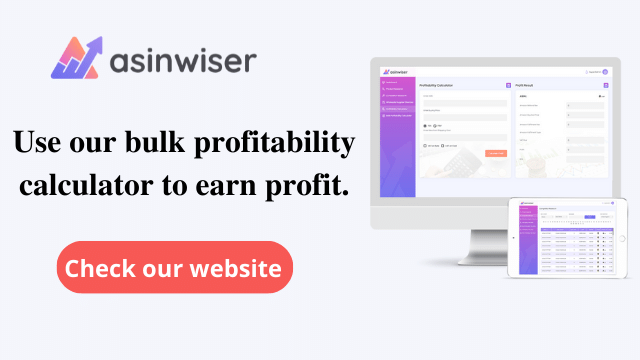
How to Price Your Product on Amazon?
Every seller on Amazon aspires to make as many sales as possible. Several factors influence a customer’s buying decision including where your items appear in search results, the number of reviews and ratings you have, how soon your products are dispatched, and, of course, the price of your products.
It’s critical to have the correct Amazon price strategy for your brand. You don’t have to compete for the Buy Box with the private label strategy as you would with retail arbitrage or wholesale, but you do have to fight with the other things that customers search for.
If your product’s pricing is prohibitive, customers may be hesitant to purchase it. Because your rivals’ prices are lower, people will prefer to buy it from them. If you price your product too low, you risk starting a price war with your rivals, which will affect the value of your product segment as well as your profit.
In this blog, we’ll discuss how to price a product on Amazon such that it sells and generates money.
How do you decide what product’s price on Amazon?
People had always purchased items depending on their cost, even before the internet became ubiquitous. Many factors contribute to consumers’ purchase of anything on Amazon, but one of them is the price they pay today. It’s also critical to have positive customer feedback, which you can learn more about by clicking here.
Whitebox is a global leader in eCommerce marketing and third-party logistics. They’ve worked with several companies to assist them in establishing the proper pricing on Amazon and other marketplaces, so their items sell successfully.
It is more expensive to purchase items on Amazon than to purchase them elsewhere. The pricing on Amazon is pretty low. This not only influences your chances of receiving the Purchase Box, but it’s also one of the most important considerations a buyer makes when considering whether to buy from you or another vendor.
Factors to consider when pricing your items on Amazon
It’s not as simple as it seems to price your things competitively on Amazon. Prices rise when there are a lot of sales, and when there aren’t many sales, prices fall. While Amazon’s algorithm is intricate, it doesn’t always make sense to reduce your profit margins by cutting your product pricing on the marketplace. That is why it is essential to understand the different prices and pricing methods.
If you wish to sell on Amazon, you’ll need to understand two different sorts of pricing: item prices and total prices. These two figures are crucial to understanding.
When you purchase goods, the item price is the price of the thing itself. Customers will see this pricing less shipping expenses and any additional costs that may cause the final price to vary from the price shown.
After the transaction, they pay the entire price or landed cost when a buyer buys anything. This is the amount the consumer will have to pay. Among the items included in the overall price are:
•The cost of the item is increased by shipping and handling.
•Discounts are special offers that aren’t accessible to everyone.
•Mode of transport
•Certain business practices aren’t charged, such as reducing or eliminating shipping costs on any order or any other order-related fees and expenditures.
•When the price is low, there are no dangers.
If you see your product under Amazon’s “Other Sellers” area and don’t see the “Buy Box,” this is crucial information to know. It’s important to remember that Amazon ranks items depending on their pricing and delivery expenses.
A simple price reduction isn’t always beneficial. On Amazon, there is no simple method to price products. When you list or adjust the price of an article on the platform, you should always keep the above-mentioned things in mind. You may improve your Amazon rank significantly if you don’t make significant changes to delivery prices or discounts.
Best methods to Price Your Product on Amazon
1. Determine how much money you earn
It’s fantastic to see money coming in, but only if it’s enough to pay the expenses of obtaining, selling, and delivering your items. That’s why you figure out your profit margin as soon as you start studying a new item. Otherwise, each transaction might cost you money and effort.
2. Consider your expenses and fees first
The margins you want will probably be simple to calculate. To consider a product’s pricing, you must first determine how much it will cost to manufacture it. Making, stocking, advertising, and shipping are just a few of the expenses that go into determining an online sale’s ultimate price.
3. Make your goods stand out from the crowd
You must demonstrate to clients why your product is worth more than a comparable thing to convince them that yours is.
You can’t simply purchase a competitor’s same product, add your branding, and expect to sell it for a lot more money than they do on Alibaba. Consider what additional features, advantages, and materials your product may provide to the consumer.
Look at customer reviews for your rivals’ items to see what gaps they don’t have that yours can address. Then improve your product to bridge the gaps.
4. Be adaptable and consider auto pricing
It might be a lot of effort if you have to modify rates all the time. People who sell products on Amazon often utilize auto pricing, which makes determining how much to charge simpler. Auto pricing is simple: it allows you to adjust the price of your item in response to price changes made by other vendors. This might be an excellent option for eCommerce businesses that offer highly competitive items. It’s critical to keep the “sneaky purchase” box ticked by ensuring your items are priced similarly to other things on the market. Otherwise, you may not be able to sell anything.
5. Compare pricing at various retailers in an A/B test
A split test, often known as an A/B test, may be used to determine which pricing your product sells better at. An A/B pricing test is straightforward: you put your product on sale at two different prices for a certain period, then assess how well it performed. You may establish pricing based on facts rather than guesswork when doing a split test.
6. Encourage consumers to return to your brand
You’ll be able to offer cheaper rates and earn more money if you don’t pay hefty fees to third-party markets and don’t have to deal with all the additional labor that comes with maintaining eCommerce platforms. This is the most straightforward technique to entice visitors to visit your website if you put your Amazon pricing at least a bit higher than your website’s prices. However, if several other individuals offer similar things at cheaper costs on Amazon, this may not be the most excellent option.
7. Use “charm pricing”
The practice of purposely pricing things to encourage people to want to purchase them is known as charm pricing, sometimes known as psychological pricing.
This price plan may help you gain more sales if you’re offering a product that’s more of an “impulse purchase,” such as a novelty item. Customers may believe they are receiving a reasonable price.
Final Takeaway
Do you think you’re losing out on more money? Put the strategies above to the test to discover how well your pricing plan performs! There are many rivalries when selling on Amazon, and what your rivals are doing may not work for you as well. Eventually, you’ll discover a pricing point that permits your goods to sell consistently.
An intelligent software tool—Asinwiser— is what you need as an Amazon. It is an impeccable solution for all your needs, including product research, competitor research, fba calculator and profitability calculator.
Share this:
Subscribe to Our Newsletter
Recent Post
- Top 13 Amazon Inventory Management Tools for FBA Sellers in 2023
- Asinwiser: The Ultimate OMSGuru Alternative for Amazon Sellers
- Repricer.com Alternative: Why Asinwiser is the Superior Choice for Amazon Sellers
- Aura Alternative: Why Asinwiser is the Superior Choice for Amazon Repricing
- Maximize Amazon Sales with Asinwiser: The Superior Amazon Repricer & Revenue Analytics Tool
